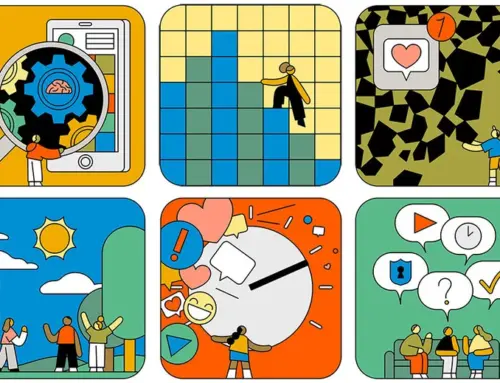The Winter Olympics have shed light on some of the most positive and empowering aspects of being an athlete: passion, dedication, and perseverance.
But they’ve also highlighted some of the darker issues athletes deal with — namely disordered eating.
Two female figure skating competitors, Russian Yulia Lipnitskaya and American Gracie Gold, had to sit out this year’s Olympics due to eating disorders.
But perhaps more surprising, male figure skater and bronze medalist Adam Rippon recently opened up about his struggles with body image issues and unhealthy habits around food in a New York Times exclusive interview.
“I looked around and saw my competitors, they’re all doing these quads
[jumps],” he told the Times about past figure skating competitions. “And at the same time they’re a head shorter than me, they’re 10 years younger than me, and they’re the size of one of my legs.”
Rippon revealed that during intense training, he subsisted on a daily diet of three slices of bread topped with margarine and three cups of coffee, each with six packs of Splenda. All with the goal of losing weight to be more aesthetically pleasing to judges.
One-third of male athletes face eating disorders
Rippon has spoken out about the prevalence of eating disorders in figure skating. But the fact that high-level male athletes struggle with eating disorders extends far beyond one sport.
“Athletes are at 2 to 3 times increased risk for developing an eating disorder compared to nonathletes,” said Paula A. Quatromoni, DSc, RD, the chair of health sciences at Boston University who helped create GOALS, an eating disorder treatment program for competitive athletes at Walden Behavioral Care in Waltham, MA.
And while it’s certainly more common in female athletes — or at least more commonly reported — the numbers are still remarkably high for men.
The National Eating Disorders Association estimates that roughly 33 percent of male athletes in weight class sports (wrestling, rowing) or aesthetic sports (bodybuilding, gymnastics, swimming) are affected by eating disorders.
Rates are nearly double in females.
So why don’t more men speak out?
Don’t underestimate the power of shame that results from the stigma surrounding mental health problems and the stereotype that eating disorders are “a woman’s disease,” Quatromoni told Healthline.
Why eating disorders are so common among athletes
There are genetic factors that predispose one to an eating disorder.
But nearly every aspect of an athlete’s life — from the psychological profile that makes them successful to team environments and even revealing uniforms — makes them especially vulnerable to developing an eating disorder.
“People who struggle with eating disorders have a heightened attunement to their body, bodily sensations, and comparison to others — all things already a part of an athlete’s psyche,” said sports psychologist Riley Nickols, PhD, director of the athlete treatment program at McCallum Place, an eating disorder clinic in St. Louis, Missouri.
Add to that the competitiveness and discipline required to become a successful athlete, and you have an ideal catalyst for sustaining an eating disorder.
What’s concerning is where athletes get the idea that they need to be thinner, leaner, more muscular.
Rippon and fellow male figure skaters said they were encouraged by coaches and judges to lose weight for better performance.
In a 2017 paper, Quatromoni highlighted an elite long-distance runner, David Proctor, who developed an eating disorder after a coach told him he was getting “a little fat.”
“To coaches and parents, smaller means faster, leaner is a better aesthetic, lower weight means a better performance. They’re giving the advice based on the belief this is what is necessary in order for the athlete to win and be ‘the best,’” Quatromoni explained.
“It’s usually well-intentioned, but still highly dangerous,” she said.
While the Times article highlights the open secret of this issue among figure skaters, eating disorders are an issue across all sports, for both men and women.
“There isn’t a sport that hasn’t come through our doors,” Nickols said of the patients at McCallum Place.
“Certain sports are more common than others — namely aesthetic-focused and judged sports, and endurance sports — but we’ve treated everyone from swimmers to soccer players, rowers, volleyball players, professional cyclists, rock climbers, and dancers,” he added.
And it’s not just Olympians.
“Eating disorders in athletes start at very young ages. Most collegiate, Olympic, and professional athletes who struggle have been suffering for years, if not decades,” said Quatromoni.
The risks of training while undereating
Rippon isn’t just speaking out about his struggles with disordered eating, but also labeling his habits as unhealthy is especially crucial for other athletes to hear.
“Some are completely unaware that what they are doing or dealing with is a disorder or a danger. Many view it as a necessary part of elite sport, a sheer sign of their commitment and dedication to being the best,” Quatromoni explained.
Most athletes in the throes of an eating disorder only view the positives: lighter, faster, prettier.
But there are very real risks to underfueling.
Rippon broke his foot last year shortly before nationals, an injury he “suspects unhealthy eating contributed to.”
Quatromoni is quite sure that’s the case. “The nutritional needs of athletes are exceedingly high. Without proper fueling, adequate macro- and micronutrients, it’s only a matter of time before an undernourished body will injure.”
Stress fractures, broken bones, and fatigue are only the visible injuries that sideline an athlete.
Eating disorders affect every organ system in the body, compromising function of the immune system, GI tract, endocrine system, and the heart.
And that doesn’t even touch on the psychological risks of the disease.
In fact, eating disorders have the highest death rate of any psychiatric condition, sometimes leading to cardiac arrhythmia and suicide, Quatromoni added.
Hopefully, Rippon’s admissions will help reduce those numbers.
“When any public figure acknowledges they’re struggling with a mental health issue, especially someone with as large of a platform as Rippon has right now at the Olympics, it helps make huge inroads,” Nickols shared. “It will hopefully remove some of the barriers male athletes have experienced, both in the culture perpetuating the problem and in the athlete’s ability to get help.”
Walden’s GOALS program is a virtual intensive outpatient eating disorder program designed specifically for competitive adult athletes. If you are concerned that you, or a loved one, may have an eating disorder, please reach out by completing the form on this page or email us at intake_coordinators@waldenbehavioralcare.com.






